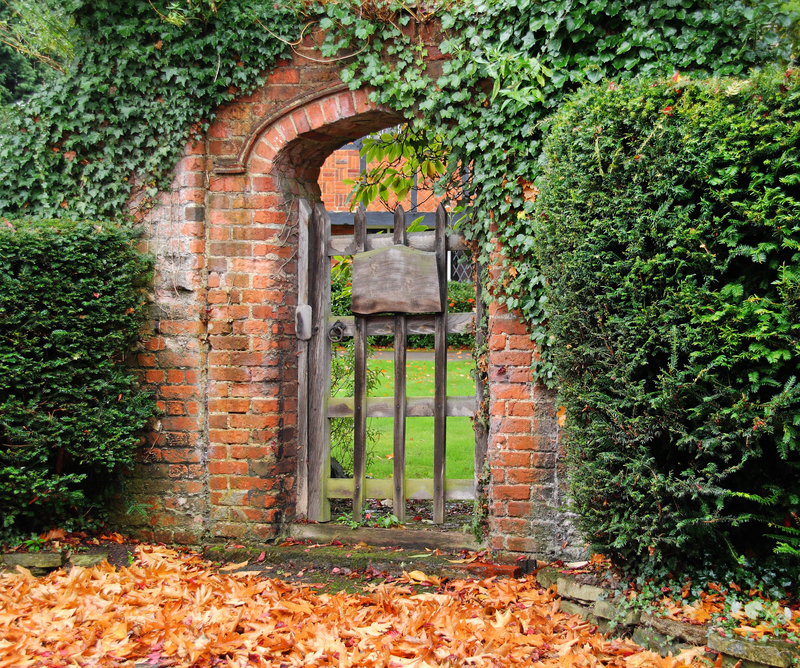Crafting a Safe and Fun Garden for Kids
Posted on 12/06/2025
Crafting a Safe and Fun Garden for Kids
Creating a safe and fun garden for kids is more than just a delightful way to encourage outdoor play--it's an opportunity to spark their curiosity about nature, foster creativity, and develop lifelong healthy habits. But how do you ensure your garden is both entertaining and secure for young explorers? In this comprehensive guide, you'll discover actionable tips, precautions, and fun ideas for designing a child-friendly garden that's as safe as it is enchanting.
Why Build a Child-Friendly Garden?
Kids are naturally drawn to the outdoors. A well-designed garden for children offers countless benefits, from enhanced motor skills and physical fitness to stress relief and improved socialization. Here's why prioritizing safety and fun in your garden matters:
- Promotes Exploration: Kids are eager to observe insects, smell flowers, and dig in the dirt, developing their senses and curiosity.
- Encourages Creativity: Outdoor spaces give children a canvas for imaginative play--nature becomes their playground and classroom.
- Supports Physical Activity: Active play in the garden helps build coordination, agility, and overall health.
- Nurtures Responsibility: Tending to plants and learning about nature fosters accountability and care for the environment.
- Strengthens Family Bonds: Gardening together creates lasting memories and valuable bonding time.

Assessing Your Outdoor Space
Before you begin crafting a safe play garden for kids, take a close look at your current outdoor area. Evaluate the following aspects:
- Size and shape of your garden: Is it spacious or compact? Are there slopes or uneven surfaces?
- Sun exposure and shade: Check which parts of your garden get the most sun or are shaded, as this will impact plant selection and play area placement.
- Potential hazards: Identify water features, sharp objects, toxic plants, or dangerous tools that need to be removed or secured.
- Existing plants and structures: Take inventory of what's already growing and whether it's safe for kids to interact with.
- Fencing and boundaries: Ensure your yard is securely enclosed to prevent wandering or unwanted visitors.
By thoroughly assessing your outdoor area, you set the groundwork for a fun and safe kids' backyard tailored to your family's needs.
Child-Safe Garden Design Principles
Designing a kid-friendly garden involves careful planning and creativity. Stick to these core principles:
- Visibility: Always keep the play areas within sight, especially for younger children. Avoid tall hedges or structures that block your view.
- Accessibility: Paths, raised beds, and garden features should be accessible for small children and those with limited mobility.
- Interactive elements: Incorporate spaces for digging, sensory play, and hands-on learning to engage young minds.
- Soft landings: Use grass, mulch, sand, or rubber matting around play equipment to cushion falls.
- Separation of zones: Designate spaces for planting, play, relaxation, and storage to reduce accidents and clutter.
Choosing Child-Safe Plants
Not all plants are suitable for little hands. Some can cause allergic reactions, poisoning, or injury. For a safe children's garden, prioritize:
- Non-toxic varieties such as sunflowers, nasturtiums, lavender, marigolds, strawberries, and beans.
- No thorn or spike plants: Avoid roses, hollies, and cacti near play zones.
- No poisonous berries: Remove shrubs like yew, oleander, or deadly nightshade.
- Edible plants: Opt for herbs, vegetables, and fruit trees to integrate learning and healthy eating.
Always double-check unfamiliar plants with a reputable gardening resource or your local extension service.
Garden Safety Tips for Kids
Keeping your backyard safe for children means balancing freedom with boundaries. Here's how to minimize risks:
1. Secure Fencing and Gates
- Install childproof gates on all exits and regularly inspect fencing for gaps or broken panels.
- Lock garden sheds and garages to keep tools, chemicals, and power equipment out of reach.
- Post clear boundary markers so children recognize the limits of their play area.
2. Remove Dangerous Objects
- Ban sharp tools, glass, and toxic substances such as pesticides or fertilizers from play zones.
- Install covers on ponds and water butts to prevent accidents or drowning.
3. Safe Play Equipment
- Always anchor swings, slides, and climbing frames securely into the ground.
- Use weatherproof, non-toxic materials for benches, tables, and toys.
- Check often for splinters, rust, or worn-out parts.
- Place play structures over shock-absorbing surfaces such as soft grass, rubber mulch, or play mats.
4. Sun Safety
- Provide shaded areas with pergolas, umbrellas, or canopies--perfect for mid-day rest.
- Encourage hats, sunscreen, and UV-protective clothing during outdoor play.
5. Safe Water Features
Many children love splashing in water, but ponds and pools pose significant hazards. If you include water, choose:
- Shallow, supervised splash zones with no more than a couple inches of water.
- Covered sandpits to avoid contamination.
- Water tables for safe sensory play (always supervise use).
Creative Garden Ideas for Kids
Transform your family garden into a play paradise with these exciting features and themed zones:
1. Sensory Gardens
Engage all five senses with a sensory garden for children:
- Touch: Soft lamb's ear, velvety moss, and bumpy ornamental gourds.
- Sight: Brightly colored blooms and rainbow pathways.
- Smell: Fragrant herbs (mint, lemon balm) and scented flowers.
- Sound: Rustling bamboo, wind chimes, and water trickling in fountains.
- Taste: Edible berries, snap peas, and cherry tomatoes.
2. Mini Vegetable Plots and Flower Beds
Give children their own small section to dig, plant, and harvest. Use raised beds or containers for easy access and let kids choose what to sow. This nurtures a love of gardening and healthy eating.
3. Fairy Trails and Secret Hideaways
Use willow tunnels, bean teepees, or garden arbors to craft magical spaces for pretend play--and secret spots for reading or relaxing.
4. Wildlife Havens
Attract butterflies, bees, and birds by planting nectar-rich flowers and installing bug hotels, bird houses, and feeding tables. Teach kids about pollinators and garden ecology through hands-on observation.
5. Mud Kitchens and Playhouses
Build an outdoor kitchen with old pots, pans, and utensils for creative, messy play. Or, install a weatherproof playhouse for year-round fun.
Teaching Kids Garden Safety and Responsibility
A safe kids' garden isn't just about design; it's about fostering awareness and responsibility. Make garden safety part of playtime:
- Demonstrate safe tool use: Show how to handle trowels, watering cans, and small rakes.
- Label plants: Use printed markers to identify safe-to-touch and "look, don't touch" species.
- Establish rules: Set expectations for behavior, such as no climbing fences or tasting unknown plants.
- Teach first aid basics: Explain how to respond to scrapes or stings and keep a first aid kit nearby.
- Encourage tidiness: Every gardening session ends with safe tool storage and tidying up.
Maintaining Your Kids' Play Garden
To keep your garden enjoyable and secure, adopt these regular maintenance routines:
- Inspect play spaces: Look for hazards such as wasp nests, exposed nails, or broken fences after storms.
- Clean sandpits and water tables frequently: Prevent mold or pest build-up.
- Prune shrubs and mow grass: Keep pathways clear and sightlines open.
- Check plant health: Remove diseased or dying plants promptly to avoid injury and maintain a beautiful space.

Involving Kids in the Gardening Experience
Children are more likely to respect and care for a garden that they've helped create. Involve them from planning to planting to harvesting:
- Let them design: Draw garden plans together and brainstorm fun elements to include.
- Allow choices: Involve kids in selecting seeds, colors, and play features.
- Share chores: Watering, weeding, and harvesting become family activities.
- Celebarate successes: Take photos, host a picnic, and enjoy the fruits (and veggies) of your labor!
Conclusion: The Joy of a Safe, Playful Garden for All
Crafting a safe and fun garden for kids transforms your backyard into a realm of adventure, learning, and growth. Thoughtful safety measures and playful design ensure your children can explore with confidence--and maybe inspire the entire family to connect more deeply with nature. Whether you have a tiny courtyard or sweeping lawn, the joy you plant today will blossom in happy memories for years to come.
- Ready to get started? Start with a quick garden assessment, gather your supplies, and pull on those gloves. Adventure awaits--right outside your door.
Additional Resources for Kid-Friendly Gardening
- Royal Horticultural Society: Gardening with Children
- KidsGardening.org
- National Trust: Gardening for Children
With a little planning and creativity, your safe and fun kids garden will become the heart of family life--filled with laughter, learning, and the wonders of nature.

